Denham is celebrating its centenary this year. I first played there in the 1970s and last played it in 1990 or thereabouts. I remembered most of it well, so individual are the holes. What I hadnít remembered was quite how contoured some of the greens are. Last time I played it in winter and it was in surprisingly good condition with well-drained fairways and excellent greens. This year we have had a dreadfully wet summer, but you would not have known it at Denham, so fast-running were the fairways and firm and well-paced the greens. Nor was the rough as high or penal as I have experienced at many clubs this summer. There was some evidence that excessive rough had been harvested, but light, wispy rough had been retained beyond the first cut. All in all the course was in exemplary condition.
Harry Colt was responsible for the original design. How much it may have changed over the years I cannot say. Hopefully Paul Turner will see this and post some of his historic photographs of the course.
Denham Golf Club station still exists, even if trains only call there once an hour. I should say that the clubhouse is part 16th-century, very comfortable and most attractive. Lunch was one of the best I have ever had at a golf club. Denham is renowned not only for the quality of its food but also for its wine cellar.
By todayís standards Denham is not a long course at 6,486 yards from the white tees. Visitors, however, get to play the course at much the same length, the yardage from the yellow tees being 6,207 yards for the same par of 70. As it happens the two par fives come in the back nine consecutively.
1. 366 yards par 4
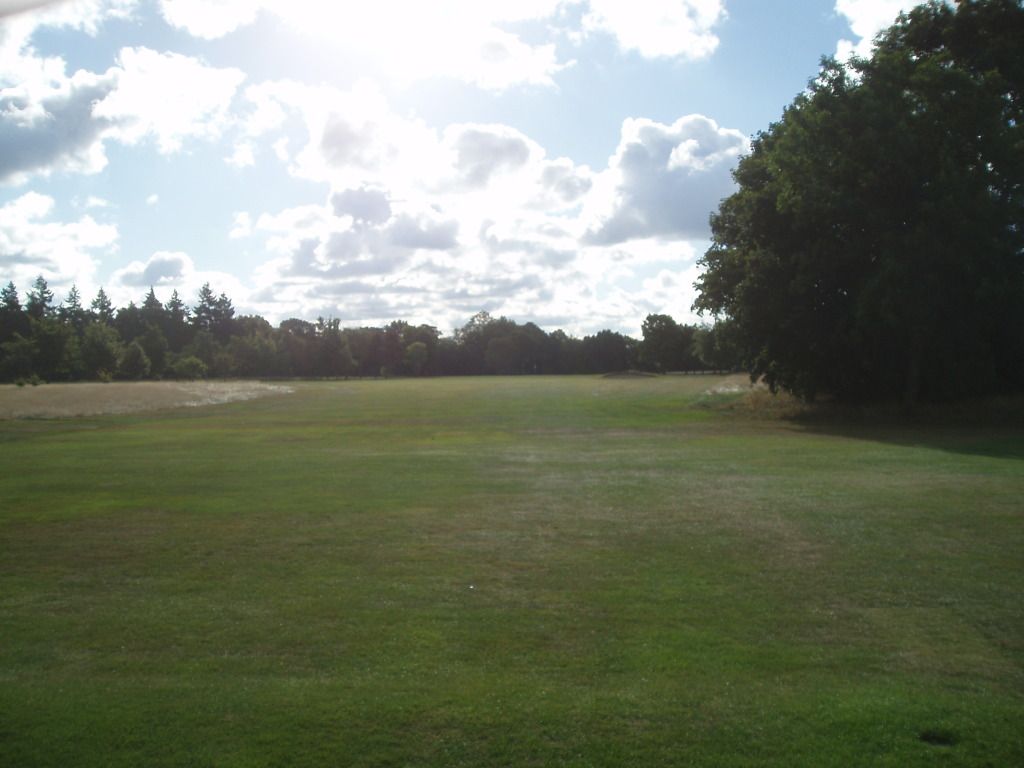
First impressions may be a little disappointing, a flat, featureless fairway with a few newly-planted saplings and trees to concentrate the mind and a couple of fairway bunkers on the right.
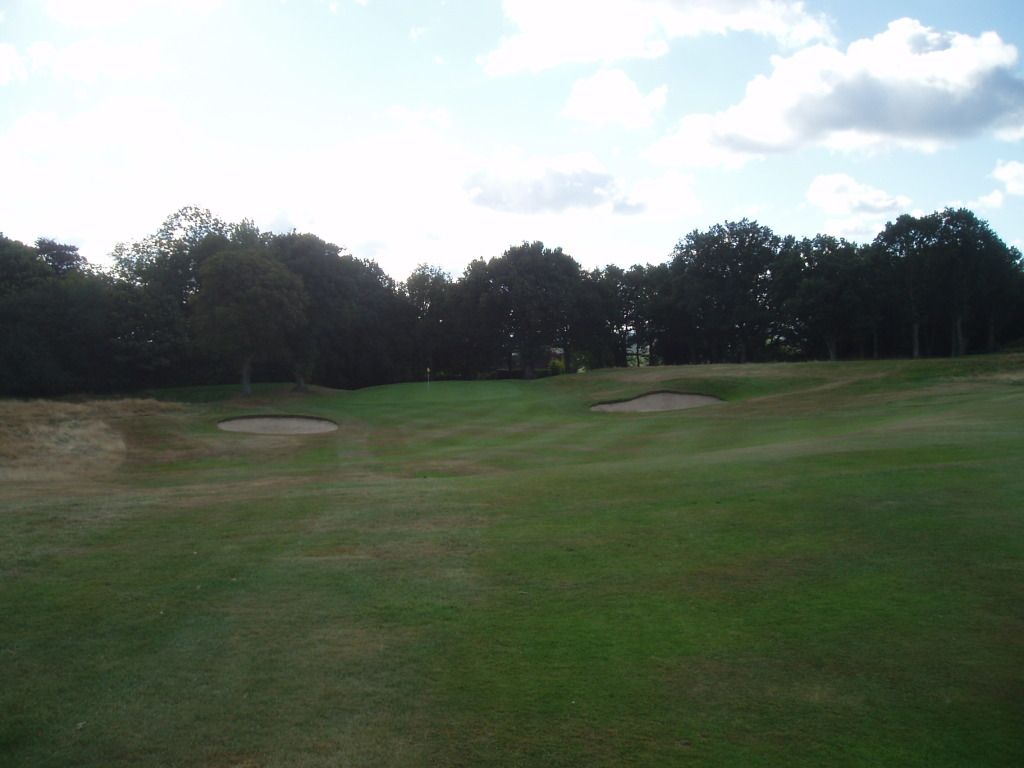
The green is only visible after a decently long drive, for it lies below the level of the fairway, protected by bunkers on either side and a substantial back-to-front fall on the putting surface.
2. 378 yards par 4

You drive out over the approaches to the 1st green. Thatís not a problem, but I think someone has tried to think of health and safety by planting young trees to the left of this drive, which also restrict play on the left of the 1st. But they force too much of the average golferís play to the right. There is a marker post on what may be the ideal line, but there is no margin for error for the longer handicap golfer. The better golfer can clear these trees at ease, leaving a decent angle in to the green Ė for now. When they are twenty years older these trees will be a nuisance, reducing the hole to a one-dimensional affair.
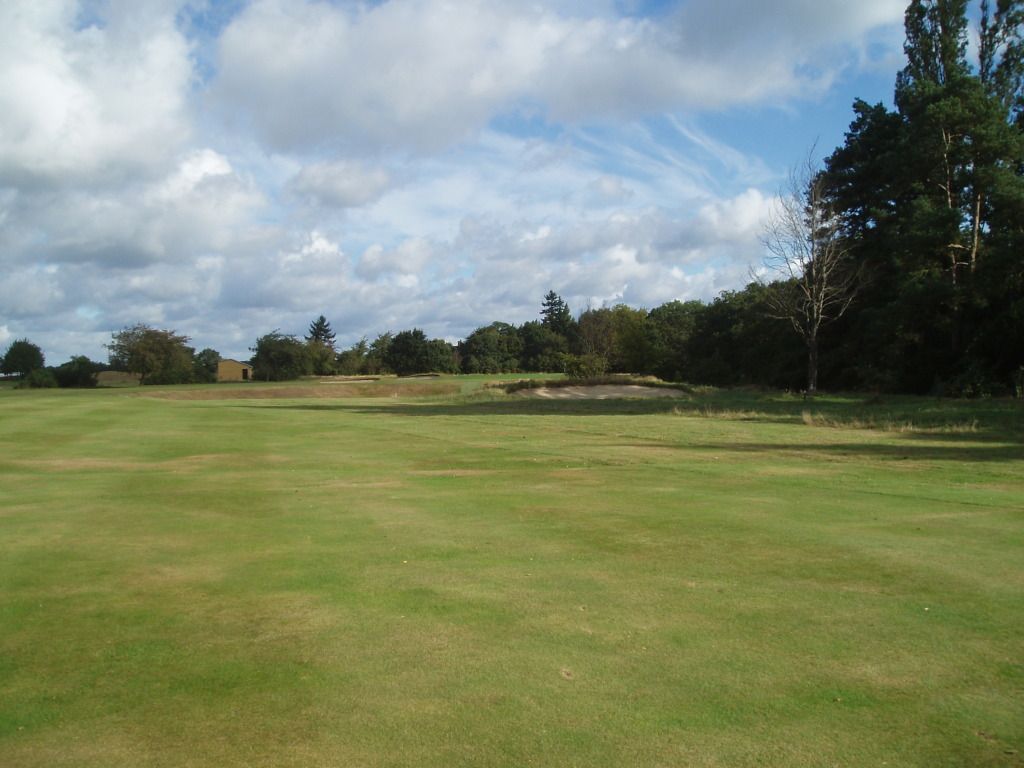
I think Iím right in saying that this drive-bunker has been put in since last I played here. It seems fairly pointless as the rough around there is probably more punishing.
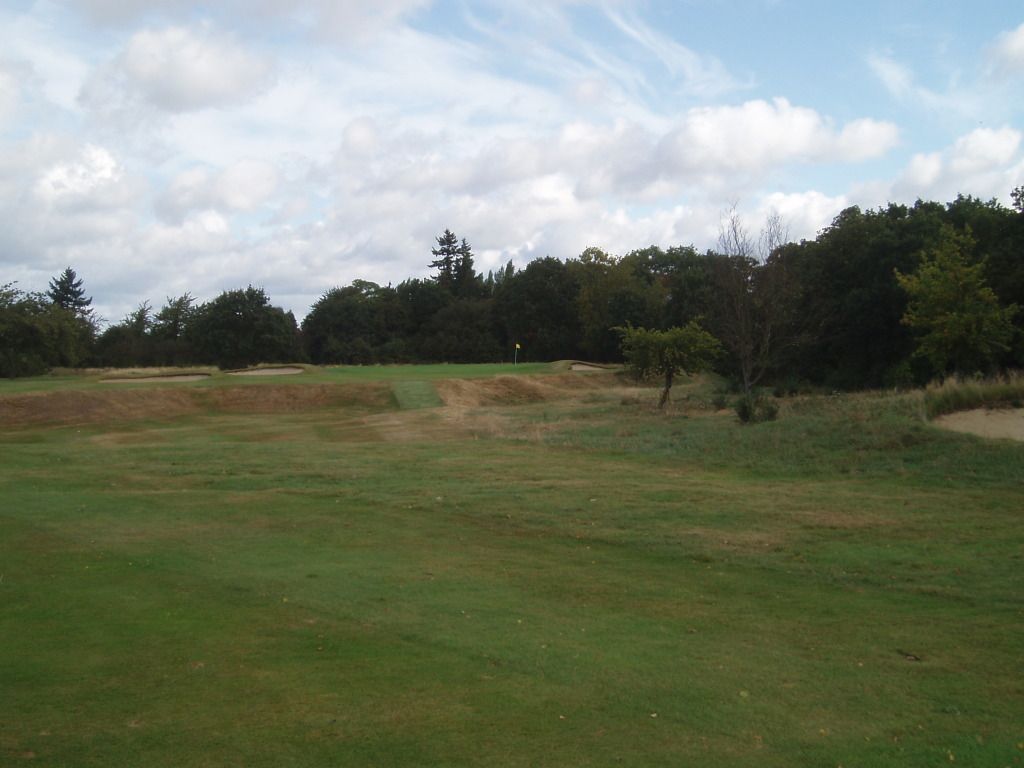
Beyond the bunker and in long-driving distance is a sunken area forming the inside angle of the dog-leg. Happily, it has been mown and shots from it towards the green should be straightforward.

As so often, holes appear so simple when you look back down the hole.
3. 414 yards par 4
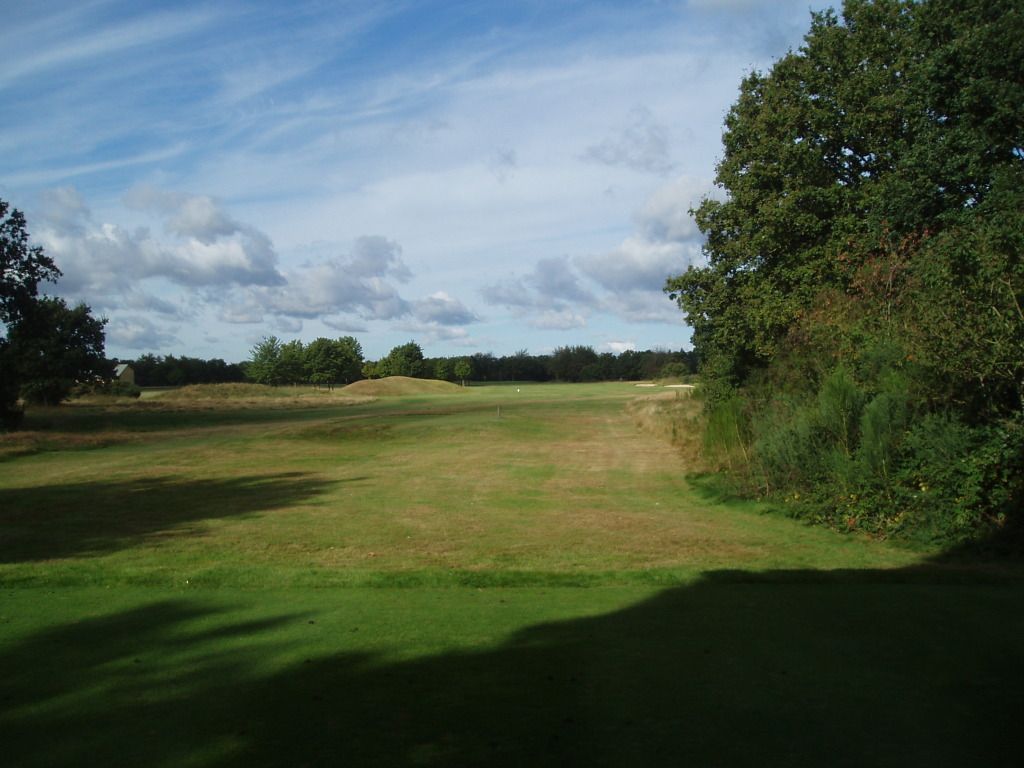
This ought to be a straightforward hole. There is plenty of room on the drive. True, it is out of bounds on the practice ground on the left and, worse, on the airfield on the right. But this hole plays into the wind and any defect in the stroke is revealed. Not for nothing is this the 3rd stroke hole.

You are, really, just over the hedge from doing serious damage to a flying machine. Make sure your insurance is valid!
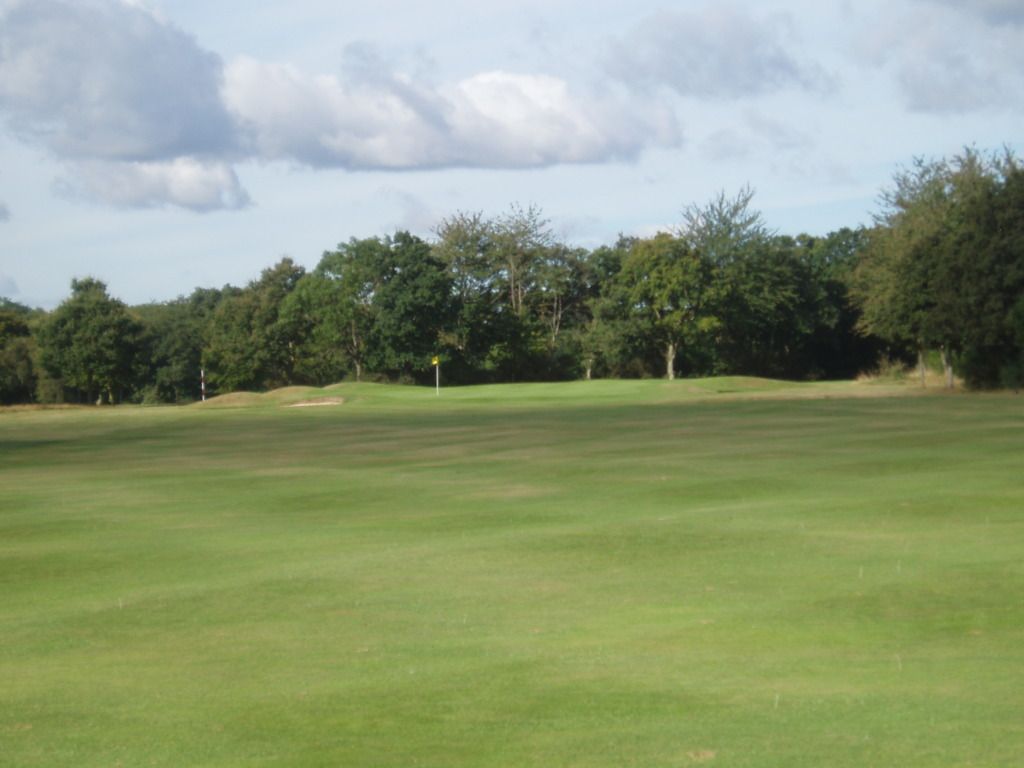
The approach is the least complicated on the course.
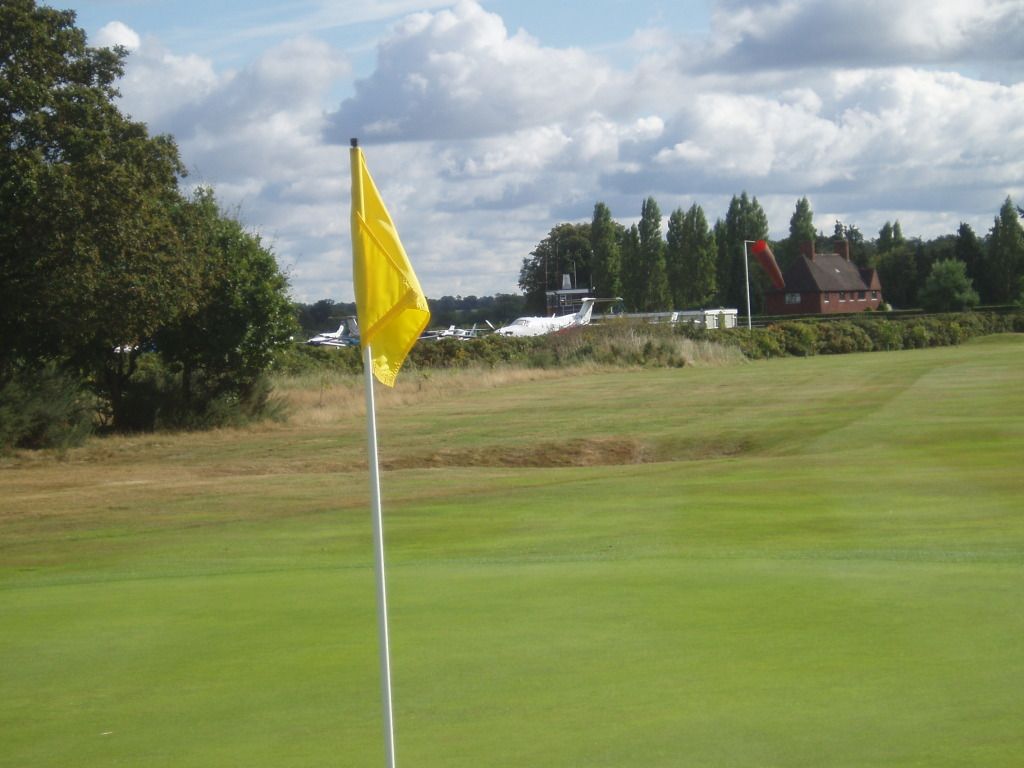
It was after my last visit to Denham that the last air-worthy Bristol Blenheim took off from Denham airfield, crashed on the course and killed its crew.
4. 419 yards par 4

Little is revealed from the tee.
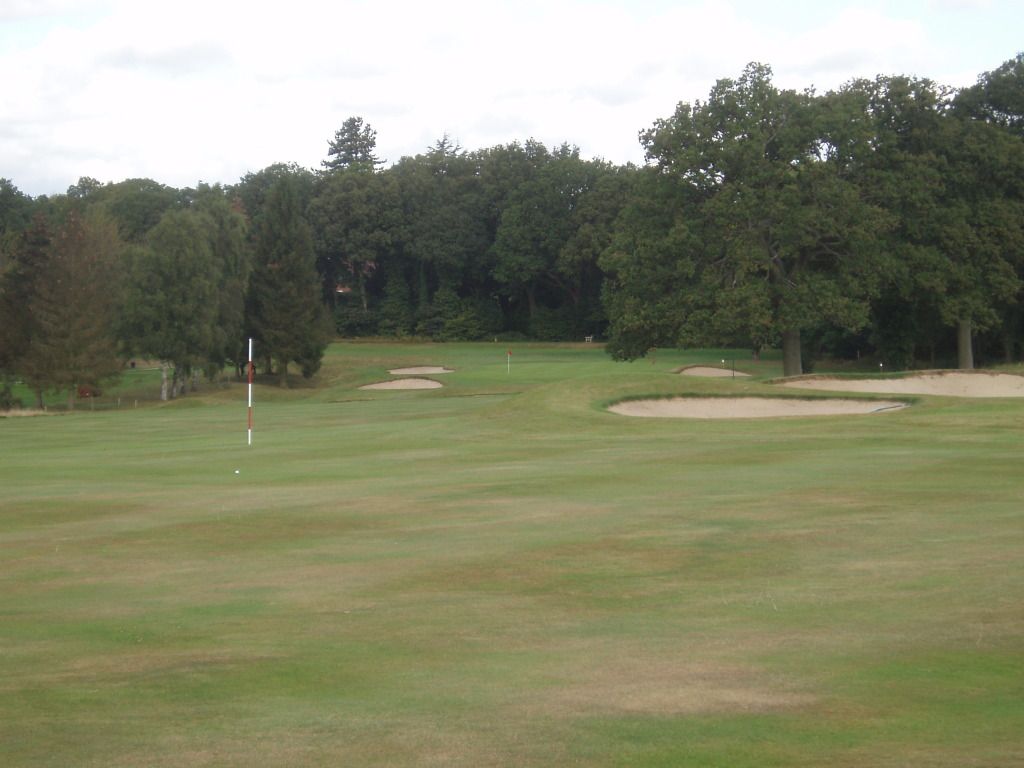
Rather more becomes visible as the marker post is reached, with two bunkers on the right only of relevance to shorter hitters. The fairway curves to the right as it descends gently towards the green.
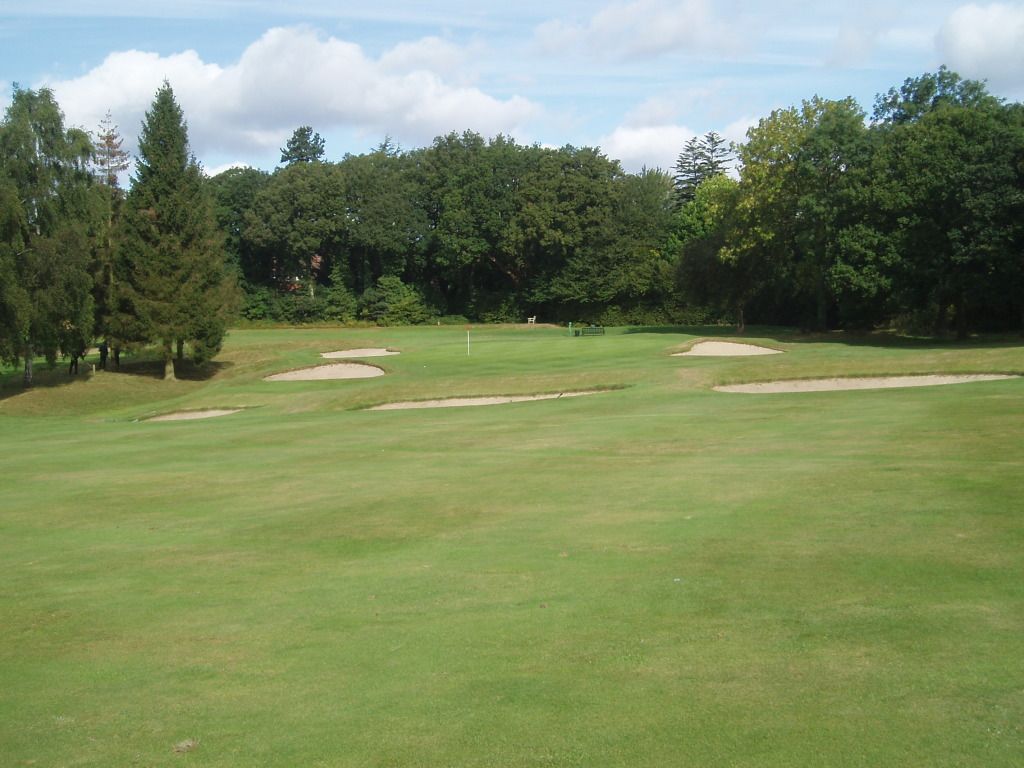
A line of cross-bunkers interrupts the fairway 80 yards short of the green and the fairway beyond leans from right to left, affecting the approach shot. A handsome and enjoyable hole.
5. 206 yards par 3
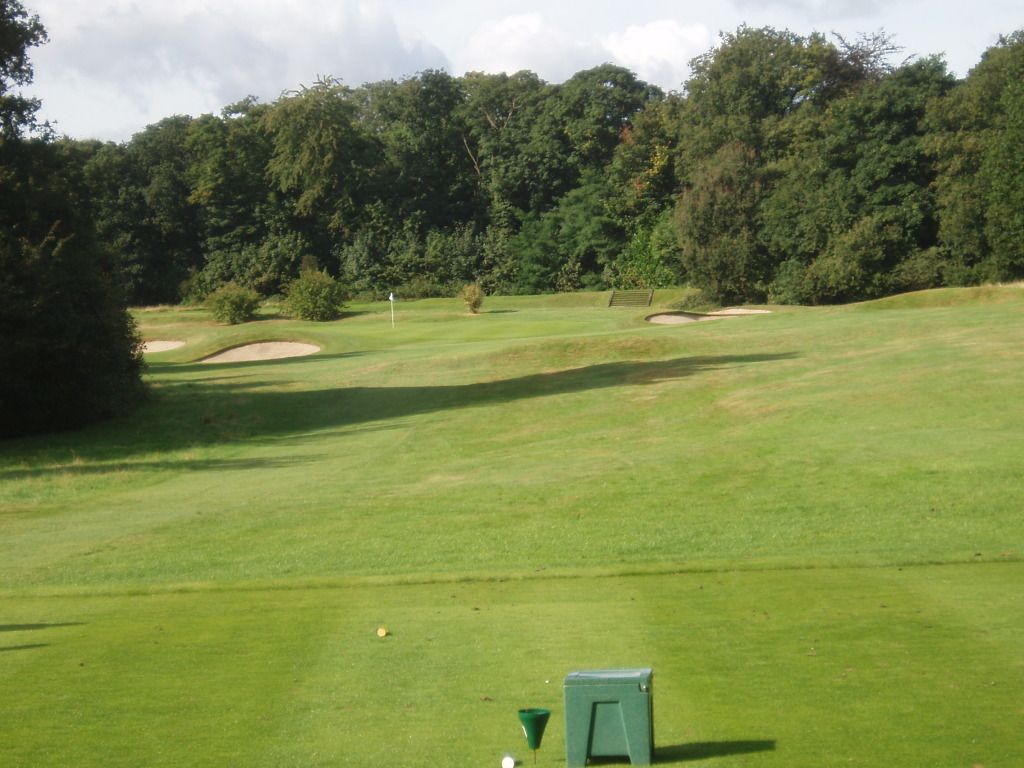
A full carry onto the putting surface is required here as the ground immediately in front of the green throws the ball substantially to the left and a false front effectively prevents running the ball up and onto the green.
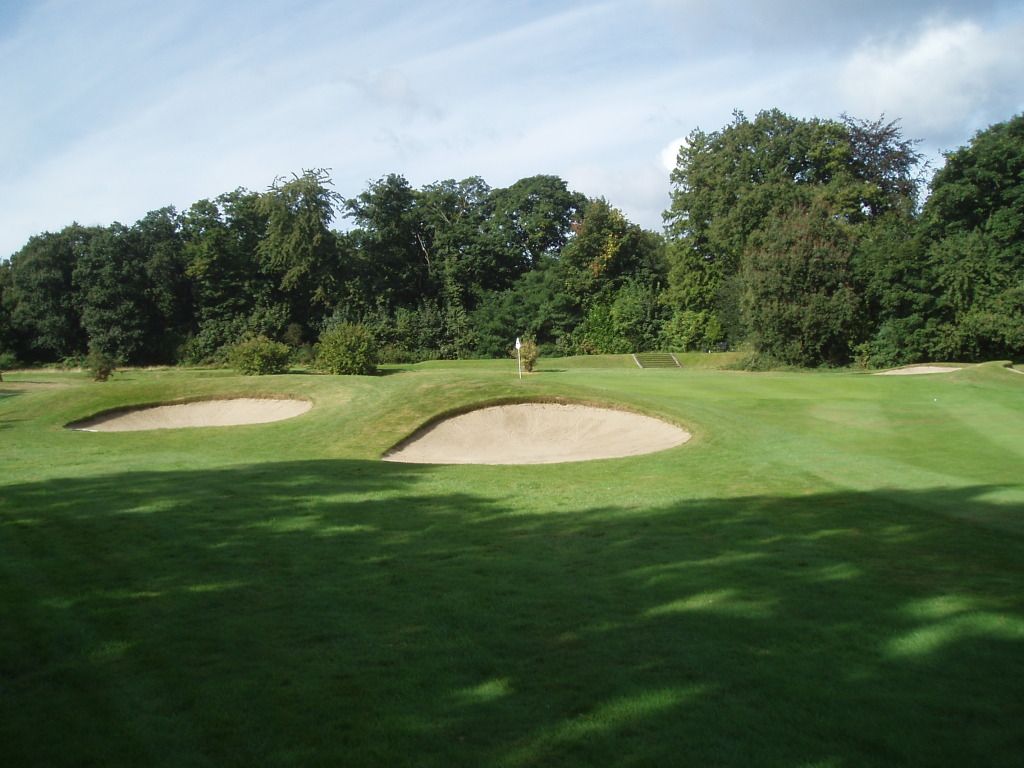
The flanking bunkers are situated either side of the false front, while the putting surface slopes against the natural line, from back left to front right.
6. 388 yards par 4
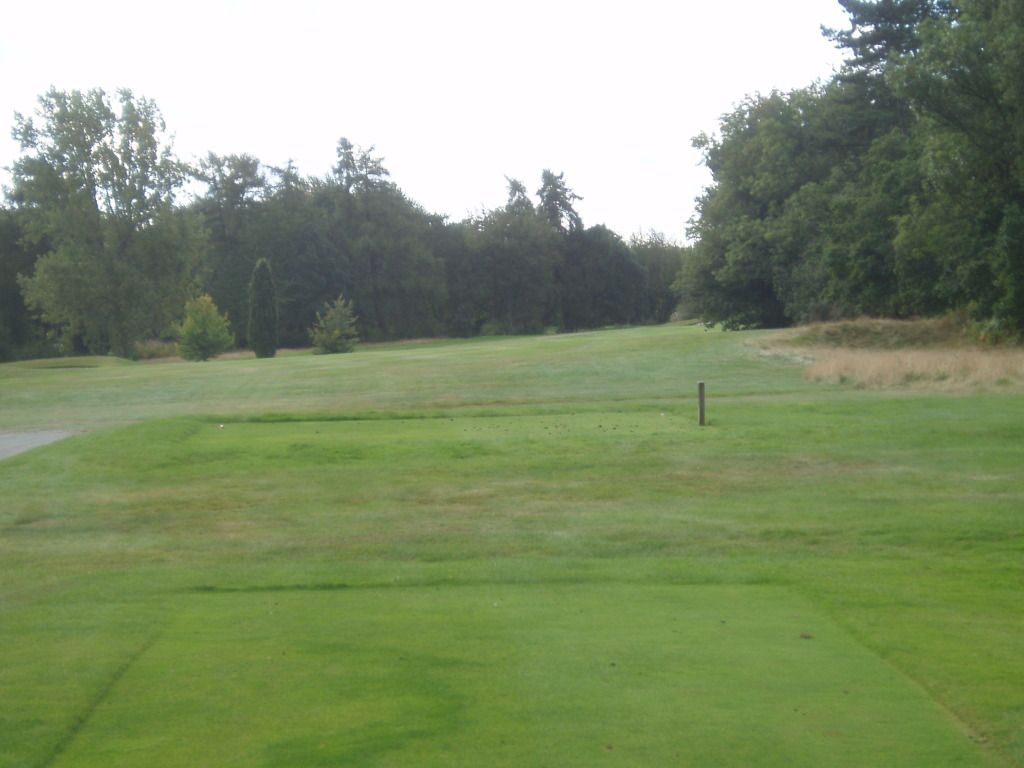
This is a demanding driving hole, the fairway leaning to the left as it curves to the right. A couple of bunkers threaten the left side of the fairway.
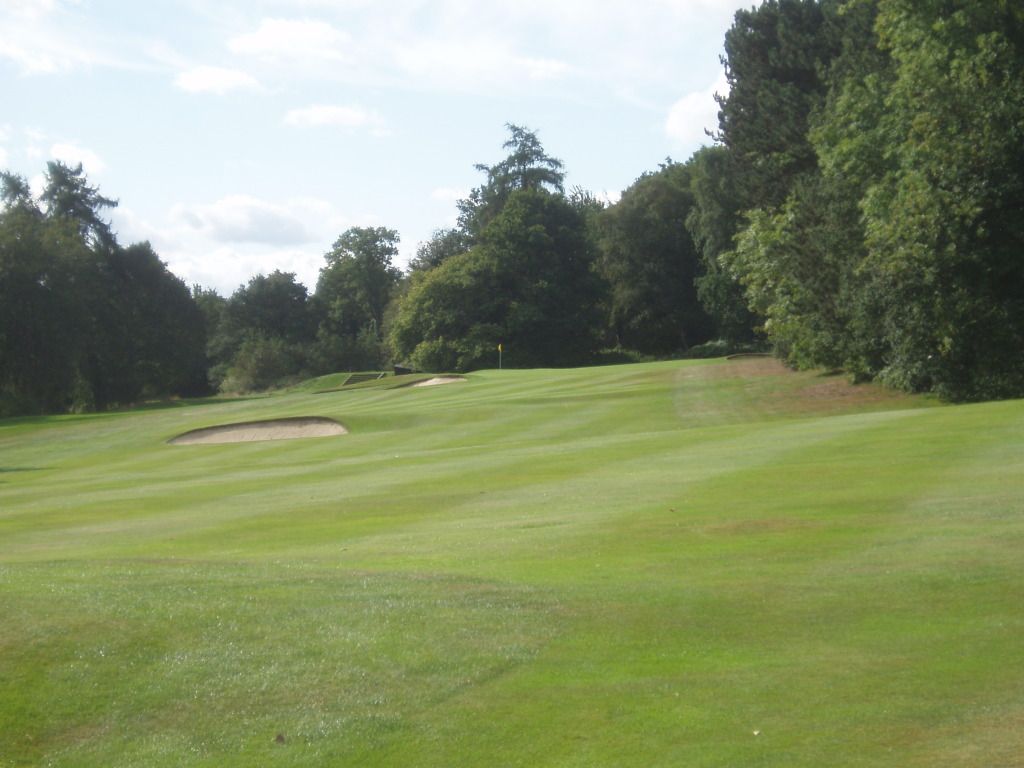

The run in to the green is challenging, with trees ever present on the right, yet the green angled slightly from right to left with two bunkers below the level of the putting surface on the left and another lurking on the right.
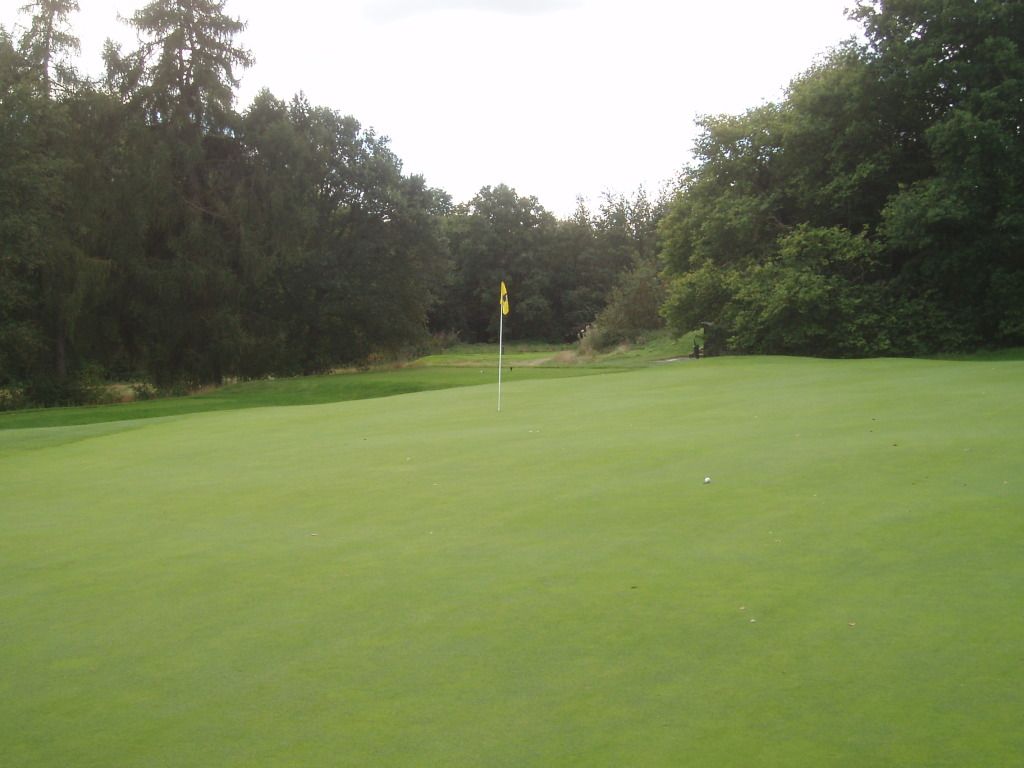
Once on the putting surface the fun is just beginning with several contradictory slopes on this big green, 40 yards from front to back. The right edge of the green is only 12 yards from out of bounds.
7. 442 yards par 4
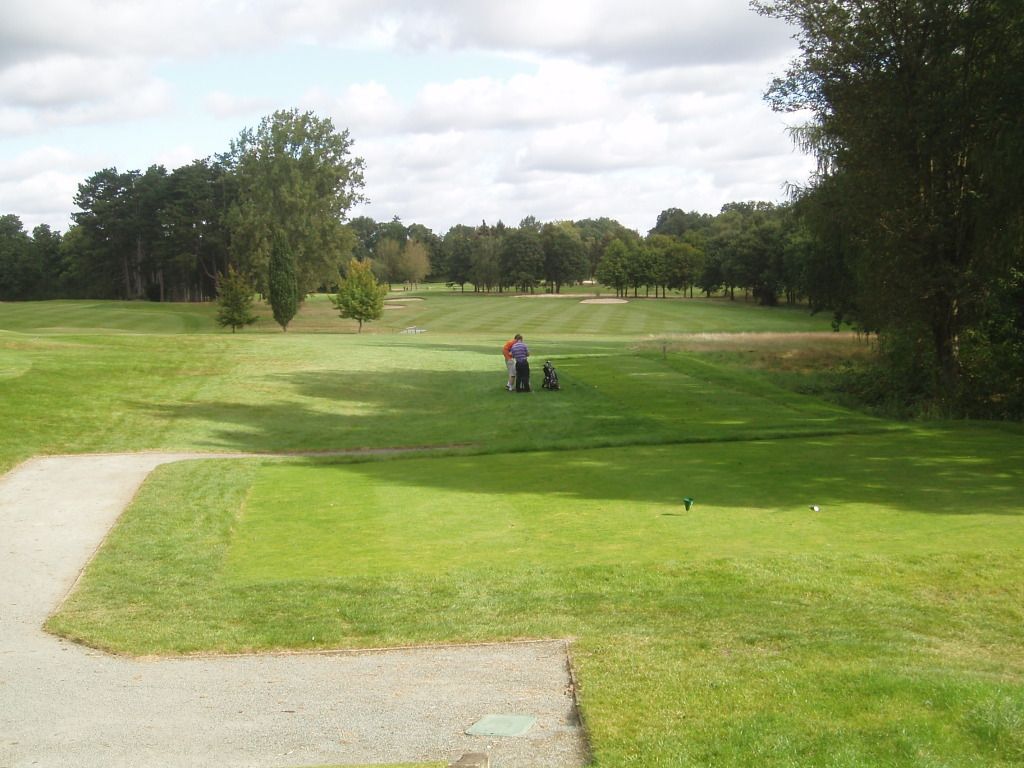
With the fairway angled slightly to the left against the line of the drive and sloping from left to right the tee shot between bunkers is demanding.
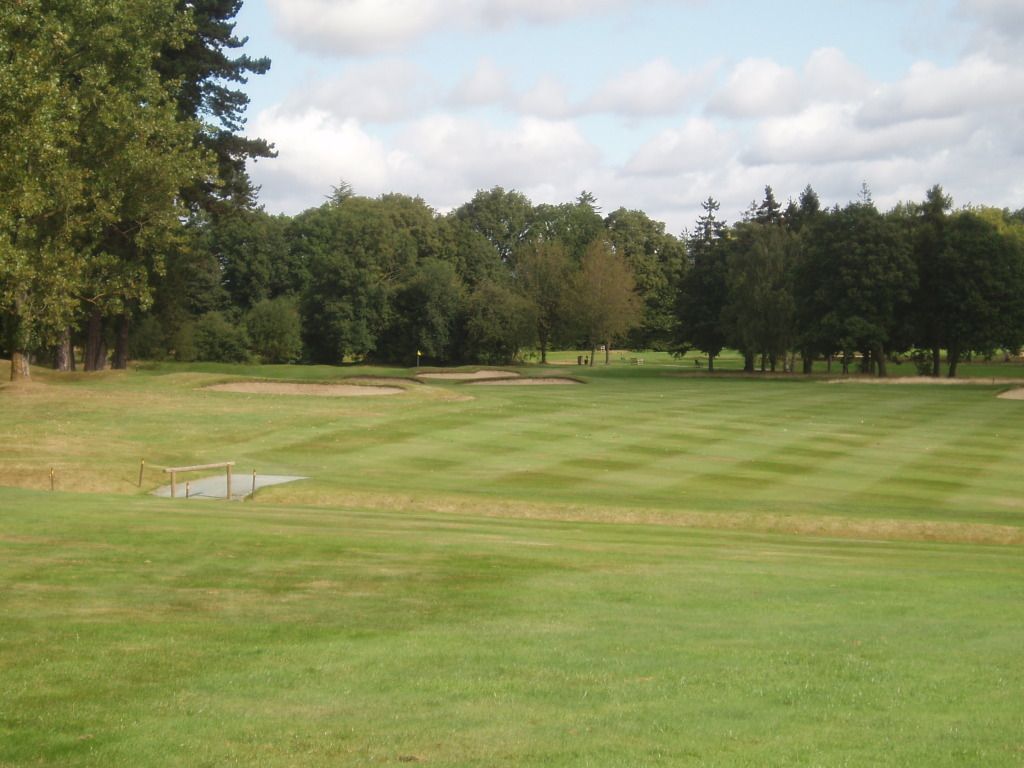
This ditch crossing the fairway should not interfere with normal play. Note the succession of bunkers to come.
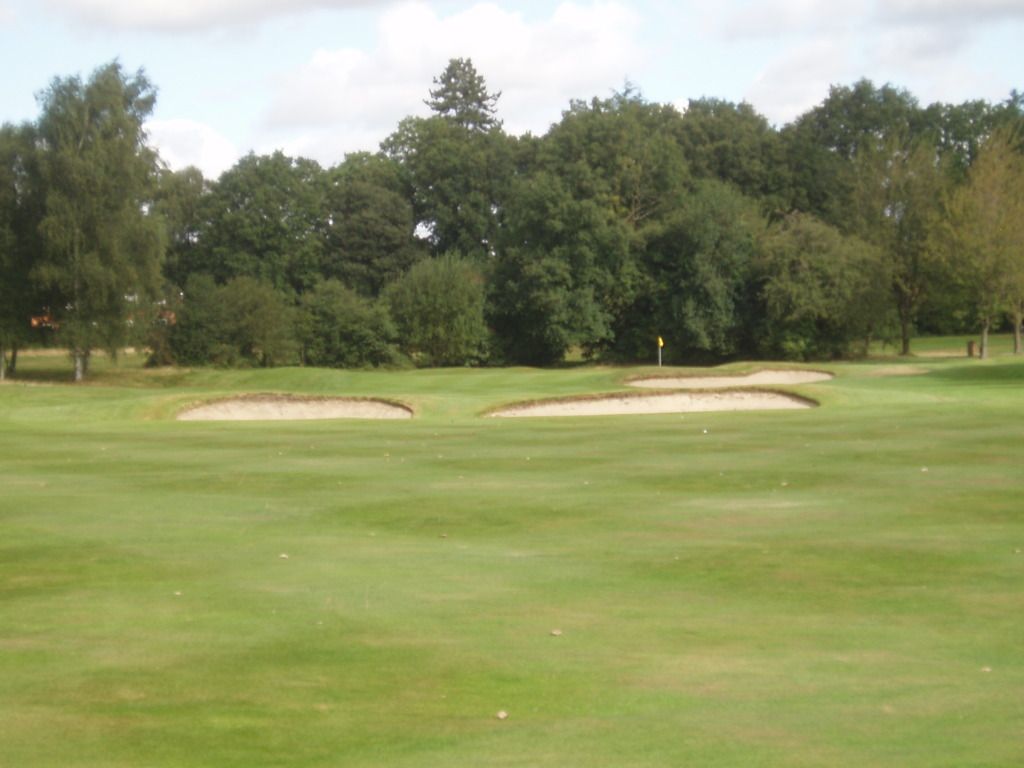
These cross-bunkers split the fairway some 100 yards short of the green.
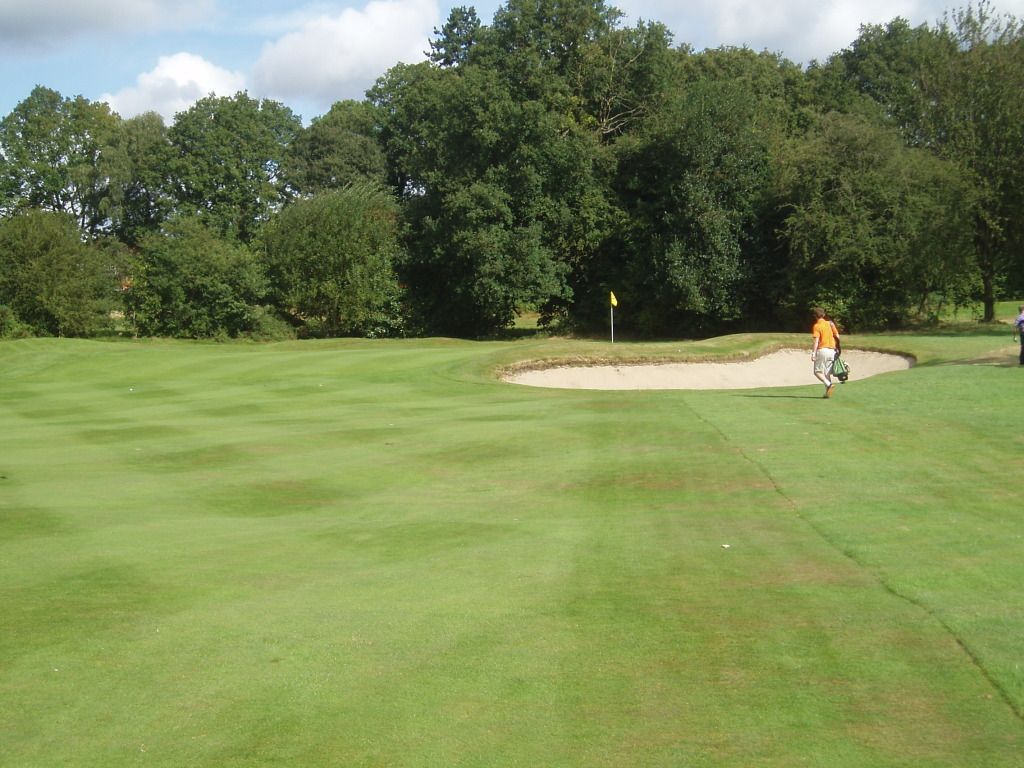
It is possible to hide the pin round to the right behind the green-front bunker but there is a helpful left to right slope on the green.
8. 191 yards par 3
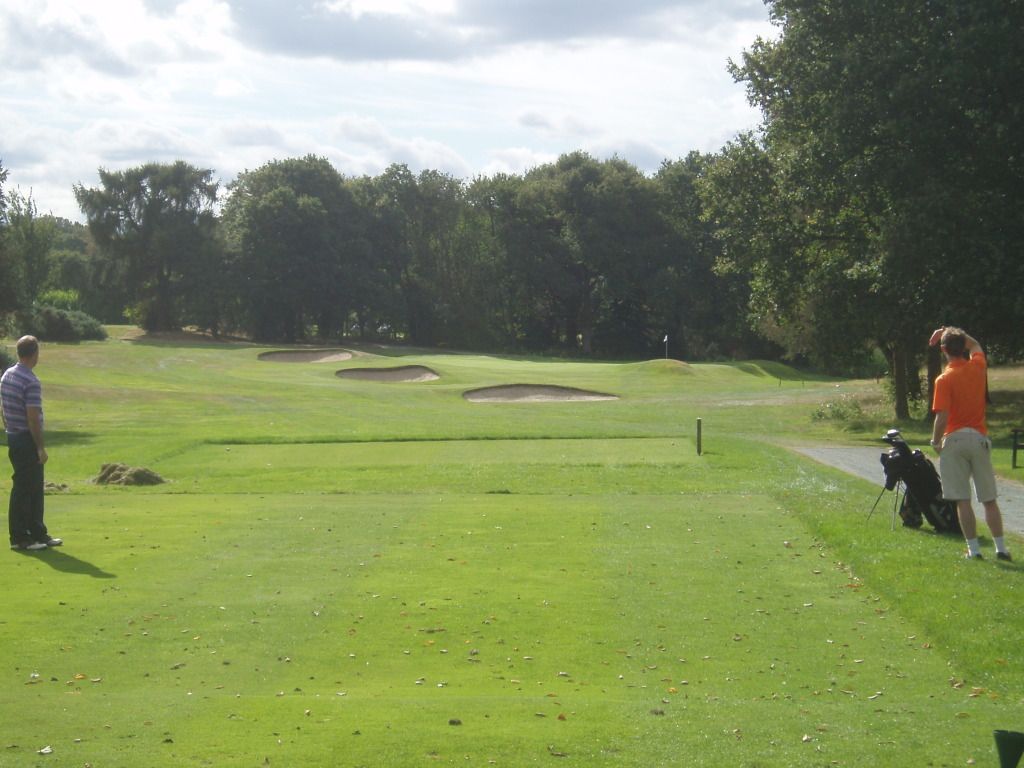
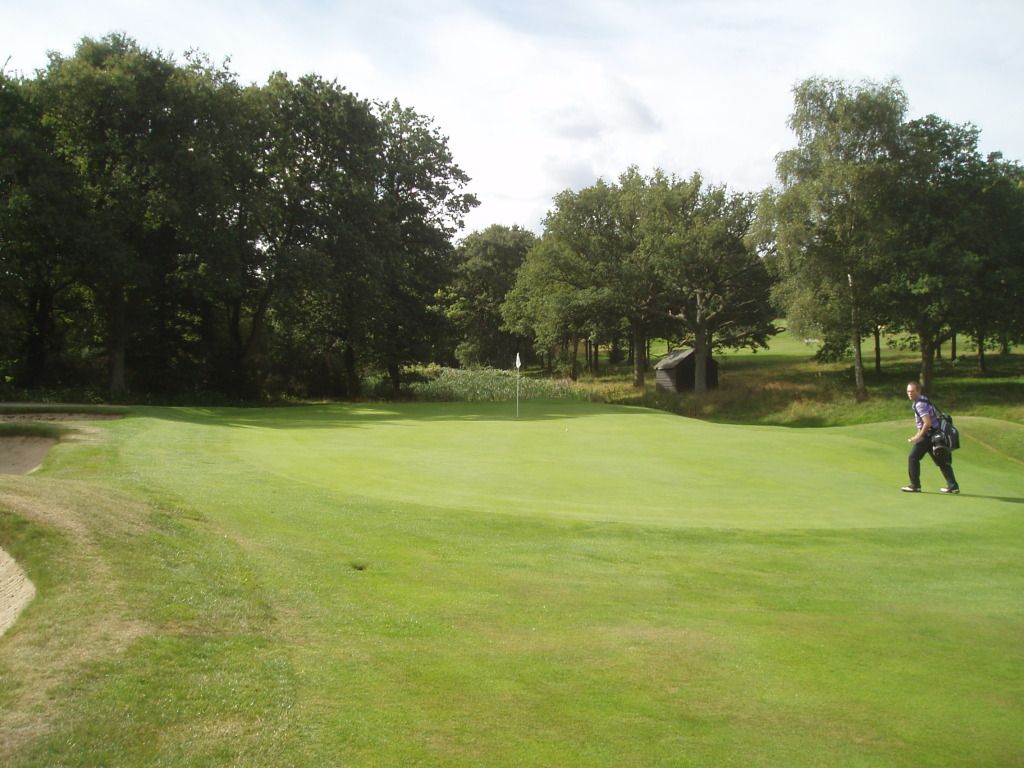
The long, thin green slopes seriously from left to right and is protected on the left by a line of bunkers, short of and alongside the putting surface. A little knob just before the green complicates matters and there is the threat of a ditch just off the green to the right.
9. 456 yards par 4
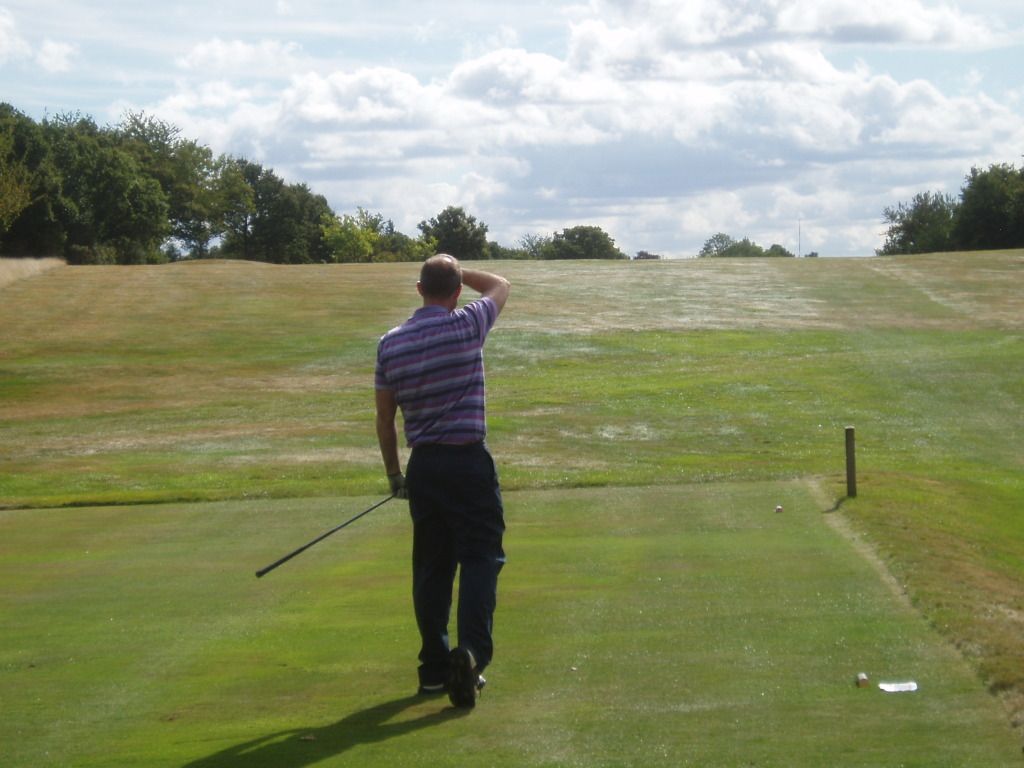
A blind tee shot begins this bruiser of a hole. The bushes on the right are some distance short of the marker post.
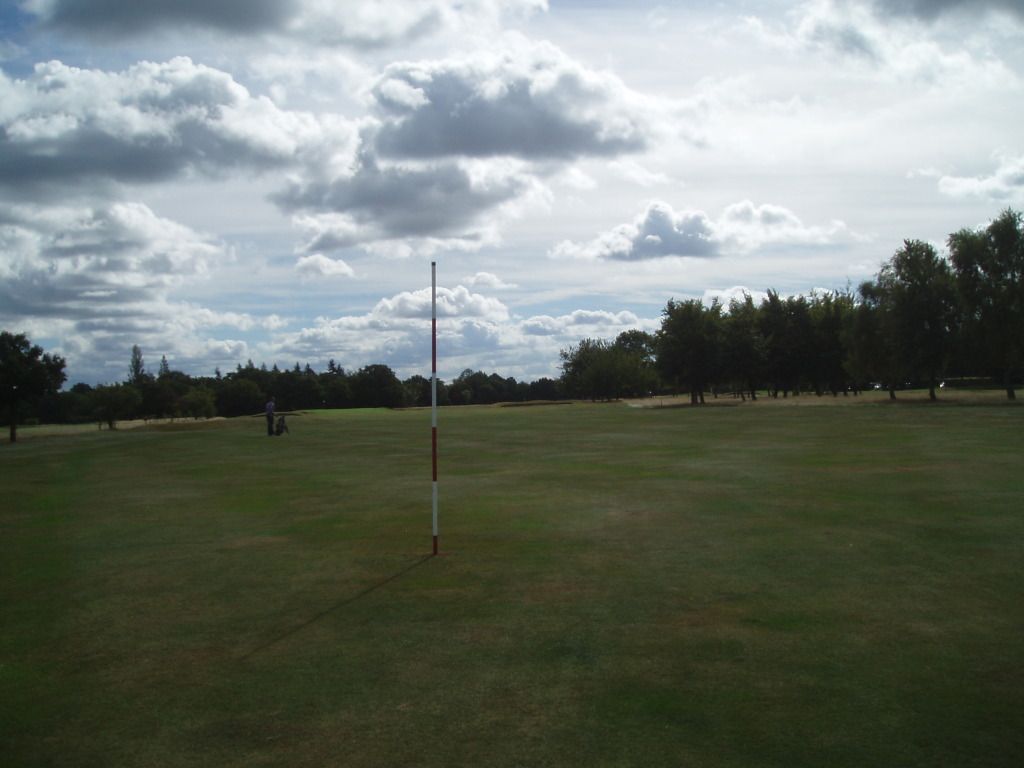
From the marker post there are still 242 yards remaining to reach the green.
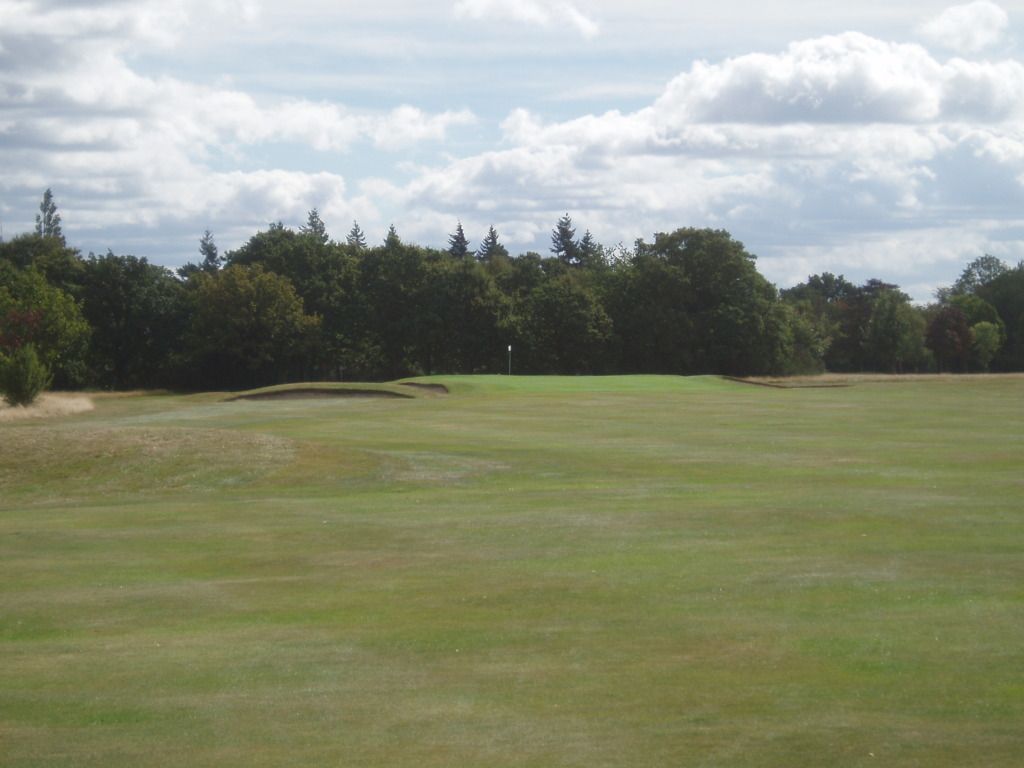
The green is raised up sufficiently to repel tentative approach shots and the back-to-front slope makes long putting testing.
More to follow....